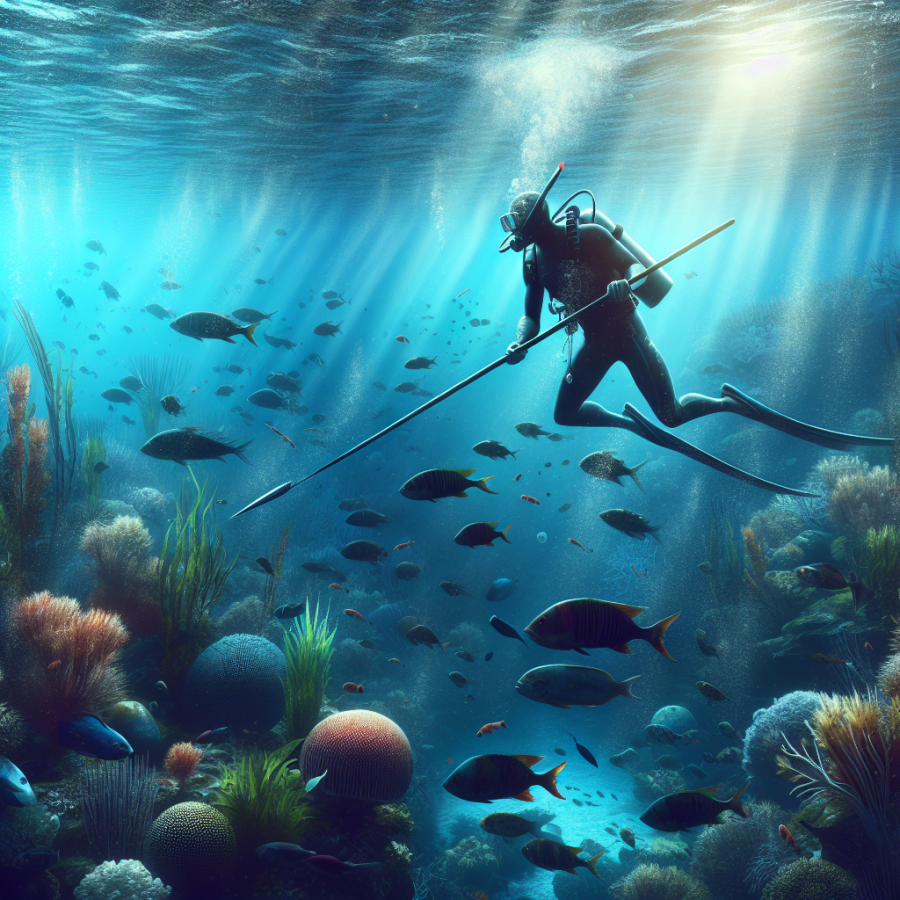Getting Started with Spearfishing: Essential Tips for Beginners
Mastering the Basics:
Spearfishing is a meticulous sport that requires a degree of skill and knowledge. Understanding these basics is a stepping stone to unlocking your potential as a spearfisher. As you begin, familiarize yourself with different speargun types considering your preference and hunting conditions. Pneumatic spearguns are best for hunting large fish, band-powered spearguns are perfect for beginners due to their simplicity, and roller heads are ideal for accuracy. Equally critical is learning how to load, aim, and fire your speargun with accuracy.
Choosing the Right Equipment:
Just like any other sport, having the right equipment can make a huge difference in spearfishing. Essential gears include wetsuits, fins, masks, snorkels, knife, and weighting systems. When choosing a wetsuit, ensure it provides adequate camouflage while protecting you from cold water and possible injuries. On the other hand, low-volume masks can improve visibility, while a good pair of fins enhances mobility underwater. Safety should be at the forefront when selecting your equipment.
Understanding Your Prey:
Knowledge about fish behavior, species, habitats, and migration patterns is invaluable in spearfishing. Spend time studying different fish species, understand their habits, and the best time to hunt. Look out for signs like temperature changes, tide schedules, and seasonal patterns that could influence their behaviors. Predator species like groupers, snappers, or Amberjacks are often the target for most spearfishing beginners due to their size and slow motion.
Breath-hold Training:
Improving your breath-holding capacity is integral to your performance as a spearfisher. This not only enables you to stay underwater longer but it also boosts your chances of landing a catch. You can start training breath-holds using static apnea tables. Dry static breath-hold exercises can steadily increase your breath-hold time while also training your body to cope with lower oxygen levels.
Safety First:
Safety is key in spearfishing, this cannot be emphasized enough. Always ensure your equipment is well-maintained and not faulty to avoid accidents. It’s advised that you never go spearfishing alone, take a buddy along and look out for each other. Be aware of marine life and isolation risks, have a dive plan, and ensure someone on the surface knows it.
Navigating Spearfishing Regulations:
Laws governing spearfishing vary from one region to another.
Read also:
Six-Man Football: The Dynamic Variant Reshaping Small Town Sports
Advanced Techniques and Strategies for Successful Spearfishing
Spearfishing is an ancient method of fishing that has evolved into a popular modern-day sport. Whether you do it for food or sport, successful spearfishing needs a combination of hunting skills and free-diving abilities. For advanced spearfishers or those looking to improve their skills, here are some advanced techniques and strategies that can help.
1. Mastering Breath Control: Breath control is the first skill that needs to be mastered in spearfishing. This skill enables a spearfisher to dive deeper with fewer strokes, saving energy, and prolonging the dive time. There are many exercises to improve breath-holding duration, like apnea training, yoga, swimming, and cardio exercises.
2. Camouflage: One of the many skills a spearfisher needs to acquire is the ability to blend into the aquatic environment. Use camouflage wetsuits and fins that blend well with the underwater surroundings. The less you look like a threat, the closer the fish will swim to you.
3. Patience and Ambush Strategy: One of the most effective spearfishing techniques is to hide and wait for the fish to come to you. This strategy, also known as the ambush strategy, requires a lot of patience. It involves staying motionless on the ocean floor and laying in wait for curious fish to approach.
4. Selective Fishing: Being selective in your catch not only ensures sustainability but also means you spend more time hunting for a worthy catch. This in turn improves your skills as a spearfisher. Remember, the biggest fish isn’t always the best one.
5. Use of Flashers: Flashers are an excellent way to attract pelagic fish. These devices reflect light and create a disturbance in the water, stirring the curiosity of the fish. The fish are drawn closer making it easier for you to spear them.
6. Utilizing the Aspetto Technique: This is a traditional Italian spearfishing technique that requires the diver to lie motionless at the seabed and wait for the fish to come closer. The only movement should be the spear, which must be maneuvered slowly to avoid scaring away the prey.
7. Equalization: To dive deeper and avoid injuries, the spearfisher needs to equalize the pressure in their ears. Failing to equalize will not only limit your depth but also can cause severe ear damage. Learning different techniques of equalization can help in achieving deeper dives.
8.




